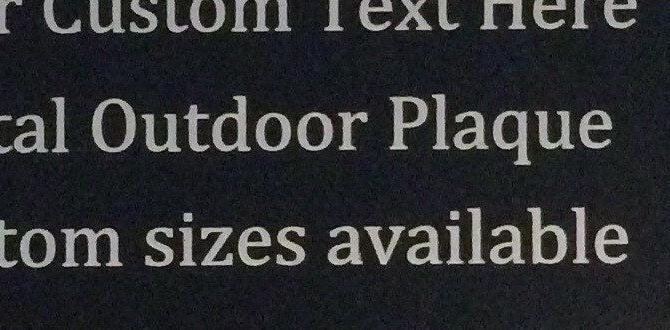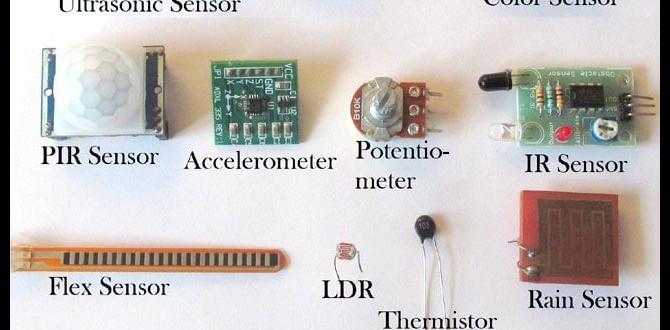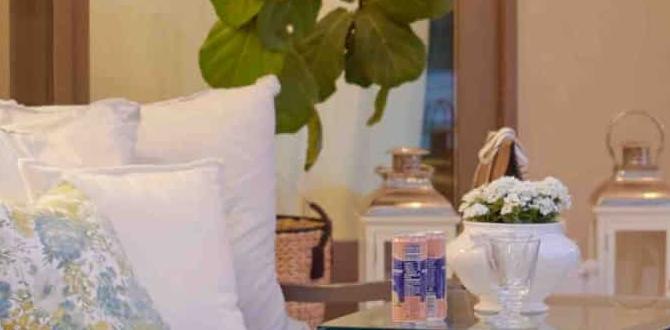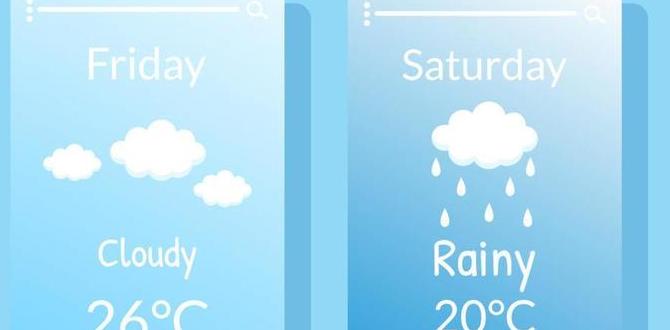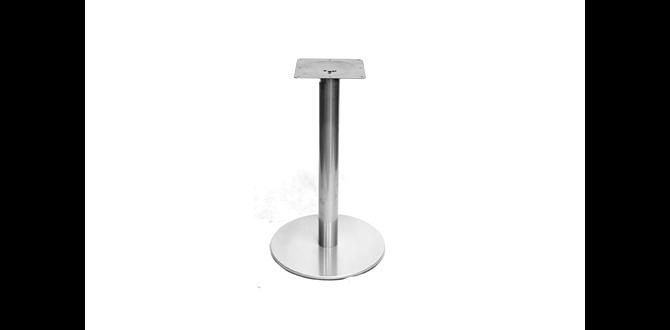Choosing the right flower pots for outdoors is key to happy, healthy plants and a beautiful garden. This guide breaks down materials, sizes, and styles, ensuring your outdoor plants thrive all season long.
Having a beautiful outdoor space filled with colorful flowers is a dream for many. But when it comes to picking out the perfect flower pots for outdoors, it can feel a bit overwhelming. What material is best? How big should they be? And what about drainage? Don’t worry! We’re here to make choosing outdoor planters as simple and enjoyable as watching your flowers bloom. This guide will walk you through everything you need to know to select the best pots for your outdoor garden.
Flower Pots for Outdoors: Your Essential Guide
Outdoor flower pots are more than just containers; they’re your plant’s homes, essential for their growth and your garden’s aesthetic. Selecting the right ones means considering the plant’s needs, your climate, and the overall look you want to achieve. Let’s dig in!
Why the Right Pot Matters: Beyond Pretty Looks
Choosing the right flower pots for outdoors goes beyond just aesthetics. The pot’s material, size, and drainage capabilities directly impact your plant’s health.
Root Health: Pots that are too small can stunt root growth, while those that are too large can retain too much moisture, leading to root rot.
Water Drainage: Essential for preventing overwatering, which is a common killer of outdoor plants.
Temperature Regulation: Some materials can overheat in direct sun, stressing plants, while others offer better insulation.
Durability: Outdoor pots need to withstand various weather conditions, from scorching sun to freezing temperatures.
Materials Matter: A Look at Common Pot Types
When selecting flower pots for outdoors, the material is a crucial factor. Each has its own pros and cons, influencing durability, weight, cost, and even how well your plants retain moisture.
Terracotta/Clay Pots
These classic pots are porous, allowing air and water to pass through their walls. This is great for preventing overwatering but means they dry out faster.
Pros: Natural look, good for plants that prefer drier soil, breathable.
Cons: Can break easily, heavy when filled, can crack in freezing temperatures, dries out quickly.
Best For: Succulents, cacti, herbs, and plants that don’t like wet feet.
Plastic Pots
Lightweight, affordable, and durable, plastic pots are a popular choice. They come in many colors and styles.
Pros: Lightweight, affordable, durable, retains moisture well, easy to clean.
Cons: Can become brittle and crack over time with sun exposure, less breathable, can look less premium than other materials.
Best For: Annuals, vegetables, and general garden use where weight and cost are considerations.
Ceramic/Glazed Pots
These pots are often decorative and come in a wide array of colors and designs. The glaze helps them retain moisture better than unglazed terracotta.
Pros: Beautiful aesthetics, wide variety of designs, retains moisture well.
Cons: Can be heavy and expensive, prone to chipping or cracking, can still break, not always frost-proof.
Best For: Showy annuals, small trees, and accent pieces in your garden.
Concrete/Cement Pots
Known for their extreme durability and modern look, concrete pots are a robust option.
Pros: Very durable, heavy (wind-resistant), modern aesthetic, frost-proof.
Cons: Very heavy, can be expensive, porous (can dry out soil quickly if not sealed or lined), can raise soil pH over time.
Best For: Larger plants, small trees, and areas prone to strong winds.
Metal Pots (e.g., Galvanized Steel, Copper, Iron)
Metal pots can offer a sleek, modern, or vintage look. However, they can heat up significantly in direct sun.
Pros: Durable, stylish, can be lightweight (galvanized steel) or substantial (iron).
Cons: Can get very hot in the sun, potentially damaging roots; can rust (depending on finish); may be expensive.
Best For: Dappled shade locations or for plants that tolerate warmer soil. Consider lining them to mitigate heat.
Wood Planters
Wooden planters, especially those made from durable woods like cedar or redwood, can add a rustic charm to your garden.
Pros: Natural beauty, good insulation, can be DIY-friendly.
Cons: Can rot over time if not treated or made from rot-resistant wood, can be heavy, may require maintenance.
Best For: Larger plants, vegetables, a farmhouse or cottage garden style.
Size Matters: Giving Your Plants Room to Grow
The size of your flower pots for outdoors is critical. Too small, and your plant’s roots will quickly become root-bound, limiting growth and stressing the plant. Too large, and the soil may stay too wet, leading to rot.
Small Pots (6-8 inches diameter): Ideal for seedlings, small herbs, or single annuals.
Medium Pots (10-12 inches diameter): Good for most perennial flowers, small shrubs, or a cluster of herbs.
Large Pots (14 inches diameter and up): Perfect for larger plants, small trees, vegetables like tomatoes, or creating a focal point with a dramatic spiller-driller-filler arrangement.
General Rule: When repotting, choose a pot that is 2-4 inches larger in diameter than the current one.
Drainage: The Unsung Hero of Outdoor Pots
This is arguably the most important feature of any outdoor pot! Ensure every pot you choose has drainage holes.
Why Drainage Holes Are Crucial: They allow excess water to escape, preventing waterlogged soil and root rot – a common plant killer.
How Much is Enough? Aim for at least one substantial drainage hole, or several smaller ones, at the bottom of the pot.
What About Cachepots? If you love decorative cachepots (pots without drainage holes), always keep your plant in a nursery pot with drainage inside the cachepot. Water sparingly and empty any excess water from the cachepot.
Understanding Pot Depths
Depth is as important as width. Most flowering plants need at least 6-8 inches of soil depth to develop a healthy root system. Larger plants or those with deep taproots will require even deeper containers.
Key Features to Look for in Outdoor Pots
When shopping for flower pots for outdoors, keep these practical features in mind:
Drainage Holes: As mentioned, this is non-negotiable.
Stability: Will the pot tip over in the wind, especially when planted? Heavier materials or wider bases offer more stability.
Frost Resistance: If you live in a climate with freezing winters, choose materials like plastic, fiberglass, or thicker concrete that won’t crack when frozen. Terracotta and thin ceramic are often not frost-proof.
UV Resistance: Plastic pots, in particular, can degrade in sunlight over time. Look for UV-stabilized plastics if longevity is a concern.
Weight: Consider if you’ll need to move the pots seasonally or just for re-potting. Lightweight materials are easier to handle.
Choosing Pots for Specific Plants
Different plants have different needs regarding their containers.
Flowers: Most annuals and perennials do well in standard pots with good drainage. Choose a size that allows for root growth.
Herbs: Many herbs, like basil and rosemary, prefer well-draining soil and can be grown successfully in various materials, including terracotta. Avoid letting them sit in water.
Vegetables: Tomatoes, peppers, and beans need larger, deeper pots to support their growth and produce fruit. Look for sturdy, deep containers. Self-watering planters can be a great option for vegetables.
Shrubs and Small Trees: These require substantial pots, often 15 gallons or larger, to accommodate their root systems. Ensure the pot is strong and stable.
Popular Outdoor Potting Arrangements
Beyond single pots, consider these popular ways to use flower pots for outdoors to create beautiful displays.
Window Boxes
Pros: Maximize small spaces, add charm to windows or railings, great for smaller flowers and herbs.
Cons: Can dry out quickly, need secure mounting.
Materials: Wood, plastic, metal, composite.
Best For: Petunias, impatiens, trailing plants, mixed herbs.
Hanging Baskets
Pros: Adds vertical interest, perfect for small spaces, creates a cascade of color.
Cons: Dry out very quickly, require sturdy hanging points.
Materials: Wire baskets with liners, coco liners, plastic, sometimes ceramic.
Best For: Trailing flowers like fuchsias, petunias, lobelia, and even strawberries.
Tiered Planters
Pros: Space-saving, creates a stunning focal point with multiple plants at different levels.
Cons: Watering can be tricky, ensuring even moisture for all levels.
Materials: Terracotta, plastic, metal, wood.
Best For: Mixed annuals, succulents, or small herbs.
Raised Garden Beds (as large pots)
While not technically pots, large, sturdy raised beds can function similarly for extensive container gardening.
Pros: Excellent drainage, fewer weeds, easier on your back, customizable size.
Cons: Requires more soil, can be an initial investment.
Materials: Wood, composite, metal, stone.
Best For: A wide range of vegetables, herbs, and flowers.
DIY vs. Store-Bought: Creative Potting Solutions
Sometimes, the most unique and affordable flower pots for outdoors are the ones you create yourself!
Repurposed Items: Old buckets, barrels, colanders, even sturdy shopping bags can be transformed into planters with added drainage holes. Always ensure they are food-safe if growing edibles.
Wooden Crate Planters: Simple wooden crates can be lined and used as charming planters, especially for a rustic look. You can find inspiration on DIY sites like This Old House for building various garden structures.
Painting Terracotta: Give plain terracotta pots a makeover with outdoor-safe paint for a custom look.
Remember to always add drainage holes to any container that doesn’t have them. A drill with a masonry bit is your best friend here!
A Quick Guide to Potting Mix for Outdoor Containers
Don’t use garden soil in your pots! Garden soil compacts too easily and doesn’t drain well in containers. Always use a good quality potting mix.
Look for: Potting mixes designed specifically for containers. They are lighter and contain ingredients like peat moss, coco coir, perlite, and vermiculite for aeration and drainage.
Adding Amendments: For plants that prefer drier conditions, you can add more perlite. For those needing more moisture retention, consider adding more coco coir.
Understanding Your Climate and Pots
Your local climate plays a significant role in which pots will be most successful.
Hot, Sunny Climates: Clay and concrete pots will dry out very quickly. Plastic and glazed ceramic can absorb a lot of heat. Consider lighter-colored pots, larger sizes to retain more moisture, or using a pot-in-pot method (placing a smaller pot inside a larger one with soil or insulation in between). Metal pots can become extremely hot.
Cold Climates: Frost-proof materials are essential. Heavy terracotta, thin ceramic, and some plastics can crack if water freezes inside them. Plastic, fiberglass, concrete, and treated wood are generally good choices.
Windy Areas: Opt for heavier pots like concrete, ceramic, or metal, or use wider-based plastic pots. You can also secure lighter pots with anchors or place them strategically behind larger items. For wind resistance, anchoring is key. Resources like Gardening Know How offer tips on securing planters.
Common Mistakes to Avoid with Outdoor Pots
Even experienced gardeners make mistakes! Here are a few common pitfalls to sidestep:
Forgetting Drainage: No drainage holes means waterlogged soil.
Using Garden Soil: It compacts and drains poorly.
Potting Too Tightly: Overcrowding roots stresses plants.
Ignoring Material Properties: Using a terracotta pot in a freezing climate or a dark metal pot in intense sun.
Underestimating Pot Size: Plants need room to grow!
Potting Up Your Plants: A Simple Process
Ready to get planting? Here’s a straightforward guide.
1.
Choose Your Pot: Select a pot with adequate drainage and the right size for your plant.
2. Prepare the Pot: If using new terracotta, you might want to soak it to pre-moisten it. Clean old pots thoroughly.
3. Add Potting Mix: Fill the pot about one-third of the way with a good quality potting mix.
4. Prepare Your Plant: Gently remove the plant from its nursery pot. Loosen any tightly bound roots by gently teasing them apart.
5. Position the Plant: Place the plant in the new pot so the top of its soil is about 1 inch below the rim of the new pot.
6. Fill with Soil: Add more potting mix around the plant, tamping gently to remove air pockets.
7. Water Thoroughly: Water until you see water draining from the bottom holes.
8. Placement: Move your newly potted plant to its desired outdoor location.
Watering and Care for Potted Outdoor Plants
Potted plants often dry out faster than those in the ground, so regular watering is key.
Check Moisture Levels: Stick your finger about an inch or two into the soil. If it feels dry, it’s time to water.
Water Deeply: Water until it runs out of the drainage holes. This encourages deeper root growth.
Watering Frequency: This varies greatly depending on pot size, material, plant type, and weather. Hot, windy days mean more frequent watering.
Fertilizing:** Potting mix nutrients deplete over time. Use a balanced liquid fertilizer or slow-release granules according to package directions, typically every 4-6 weeks during the growing season.
Frequently Asked Questions About Flower Pots for Outdoors
- What is the best material for outdoor flower pots?
- The “best” material depends on your needs. For durability and frost resistance, concrete or thick plastic are excellent. For a natural look and breathability, unglazed terracotta is good but needs more watering. Glazed ceramic and metal offer aesthetics but can be heavy or heat up. Wood provides a natural charm but requires care.
- How do I prevent my outdoor pots from cracking in winter?
- Choose frost-resistant materials like heavy-duty plastic, fiberglass, or concrete. If using terracotta or ceramic, empty them completely of soil and water before frost and store them in a sheltered location. You can also use insulating wraps for extra protection.
- Should I fill the bottom of my outdoor pots with rocks for drainage?
- No, this is a myth. Adding rocks or broken pottery shards to the bottom of pots does not improve drainage. In fact, it can create a perched water table, making the soil above the rocks more likely to stay waterlogged by raising the saturation level. Ensure your pots have adequate drainage holes and use a good quality potting mix.
- How often should I water plants in outdoor pots?
- This varies greatly! In hot, sunny, or windy weather, you might need to water daily. In cooler or less sunny conditions, every few days might suffice. Always check the soil moisture by sticking your finger about an inch or two deep. Water when it feels dry.
- Can I use any container for outdoor plants if I add drainage holes?
- Yes, almost any container can be used as long as you can add sufficient drainage holes and it’s made of a material that can withstand outdoor conditions and your climate. You might also need to consider the depth and size for the specific plant you intend to grow.
- How do I choose the right size pot for my plant?
- Generally, choose a pot that is 2-4 inches wider in diameter and deeper than the plant’s current root ball. For larger plants or those that grow quickly, you may need an even larger jump in size. Ensure there’s enough space for the roots to spread without being excessively crowded.
Selecting the perfect flower pots for outdoors is an exciting part of gardening. It’s about finding that sweet spot where beauty meets functionality, giving your plants the best possible environment to thrive. Whether you’re drawn to the rustic charm of terracotta, the modern sleekness of concrete, or the vibrant colors of glazed ceramic, there’s a perfect pot waiting to become a home for your favorite blooms.
Remember that drainage is king, and a little attention to material and size goes a long way. Don’t be afraid to experiment with different types and styles to find what works best for your garden and your plants. Happy planting, and enjoy the vibrant colors and life your potted garden will bring!

